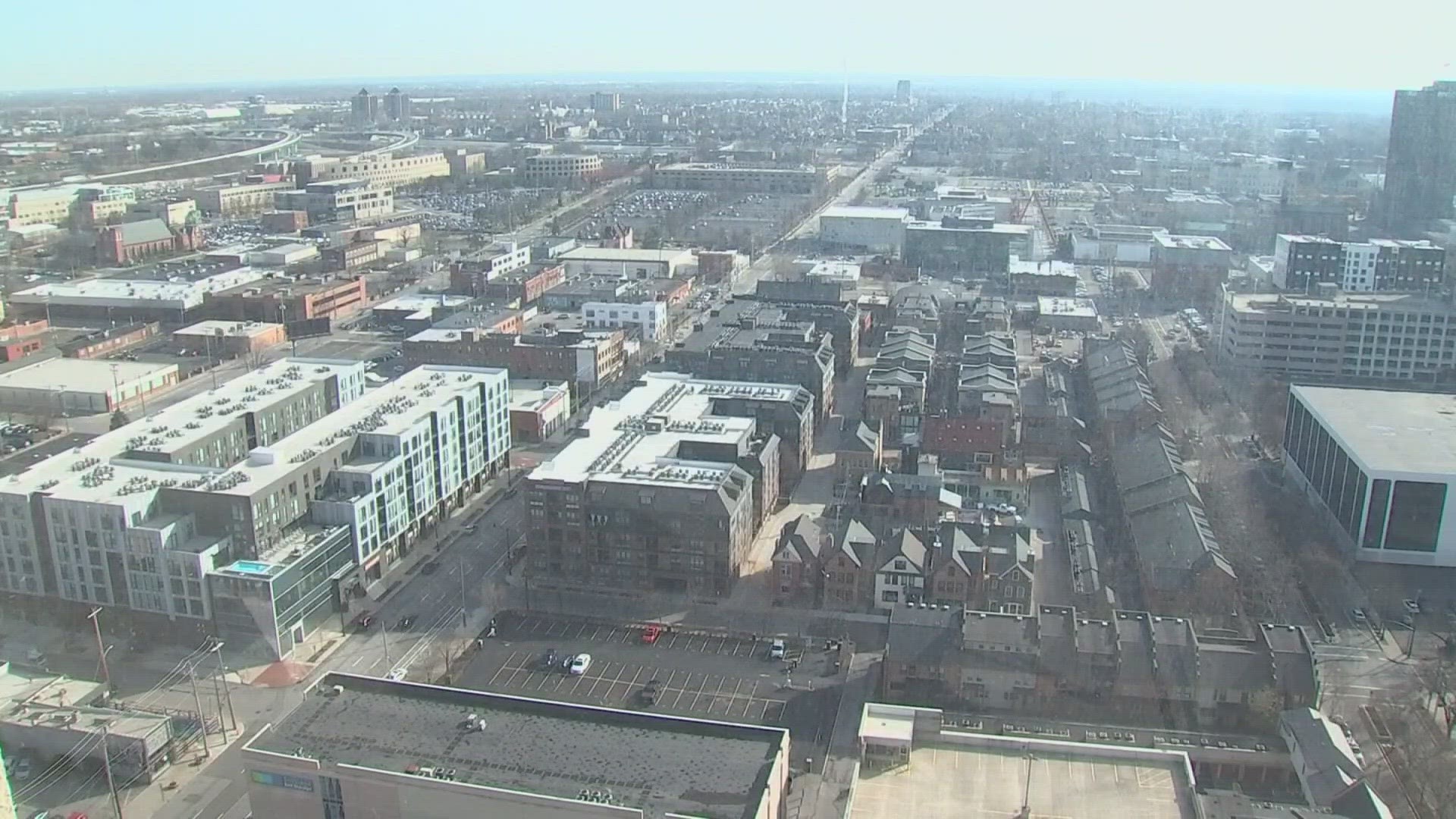COLUMBUS, Ohio — Three years ago this week, the entire world shifted because of COVID 19. The pivot everyone was forced to take continues to shape our future. Most visually is in downtown Columbus.
“Drive downtown and you'll see a ton of cranes,” says Amy Taylor, President of the Columbus Downtown Development Corporation. “I think there's nothing more important than saying that we are progressing. We are city of progress. And cranes represent that.”
Taylor wants people to know downtown Columbus is no longer the “ghost town” it once was when Ohio’s stay-at-home order forced nearly all of the city’s 89,000 downtown workers into a work-from-home office.
“I think it hit us so hard it allowed us to come back even stronger,” Taylor adds.
She listed the many ways downtown Columbus is thriving today post-pandemic: food truck Thursdays, concerts on the Scioto Mile, and the lunch bucks program to name a few.
But Taylor says the one major shift is how empty downtown high rises are reinventing themselves.
“We're seeing it across the country from Chicago and New York to Austin and Charlotte -how can we convert skyscrapers, those large scale offices that were built in the 70s and 80s, but may not have the workplace that today's employers and today's employees are looking for?,” Taylor asks.
“It's looking at how do we transform them into something that really contributes to a healthy downtown.”
That mission is underway at several Columbus skyscrapers such as the Fifth Third Center, the PNC building, and the Continental Center.
“The idea is that if you're a worker and you're coming into the office, you don't want to do just go into the office and sit in a cube alone,” says Marc Conte, Executive Director of the Capital Crossroads and Discovery Special Improvement Districts.
“You may as well be doing that at home,” he adds. Conte says the national trend of converting office spaces into more welcoming places of employment started before the COVID 19 pandemic.
The historic Fifth Third Center is reinvesting money into the 23-story building at the corner of State and High Streets with hotel-like amenities when you walk to a penthouse lounge with views as far as you can see. The building will also have a workout facility and a golf simulator for office workers.
“If you're going to come into the office, they want to have spaces where you can interact with your other co-workers collaborate and have creativity,’ Conte adds.
Other major developers like The Bernstein Companies (TBCO) say buildings that went dark during COVID 19 are an opportunity to bring new life into downtowns.
“This is going to be a really unique building that when you drive by, you can see it from miles away and say - that's my bedroom right there,” says Phil Aftuck, Director of Investments for TBCO which bought the historic Continental Center high rise in 2021.
Aftuck says the plan for the Continental is to convert the entire 25-story building into 330 apartments. But he also admits not all buildings have the “bones” to convert into new housing for downtown dwellers.
“There are a lot of office buildings out there that are really struggling,” Aftuck explains. “I don’t think we're in the 4th or 8th inning. I think we're probably very early in that game now and so unfortunately I think there'll be more.”
A recently release downtown Columbus strategic plan shows city leaders are hoping to reach 40,000 residents by 2040. Right now, there are 11,650 people who call downtown Columbus home.

